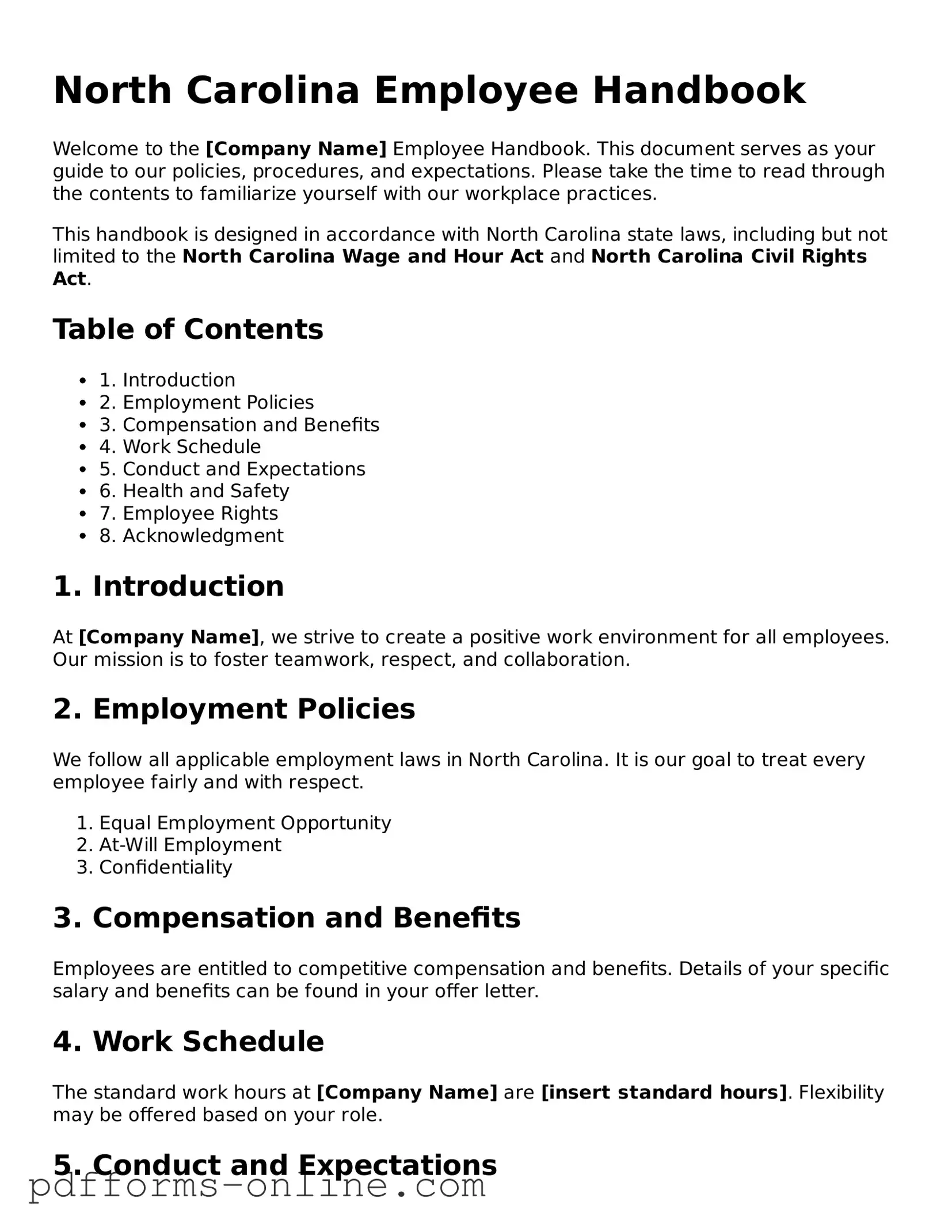North Carolina Employee Handbook
Welcome to the [Company Name] Employee Handbook. This document serves as your guide to our policies, procedures, and expectations. Please take the time to read through the contents to familiarize yourself with our workplace practices.
This handbook is designed in accordance with North Carolina state laws, including but not limited to the North Carolina Wage and Hour Act and North Carolina Civil Rights Act.
Table of Contents
- 1. Introduction
- 2. Employment Policies
- 3. Compensation and Benefits
- 4. Work Schedule
- 5. Conduct and Expectations
- 6. Health and Safety
- 7. Employee Rights
- 8. Acknowledgment
1. Introduction
At [Company Name], we strive to create a positive work environment for all employees. Our mission is to foster teamwork, respect, and collaboration.
2. Employment Policies
We follow all applicable employment laws in North Carolina. It is our goal to treat every employee fairly and with respect.
- Equal Employment Opportunity
- At-Will Employment
- Confidentiality
3. Compensation and Benefits
Employees are entitled to competitive compensation and benefits. Details of your specific salary and benefits can be found in your offer letter.
4. Work Schedule
The standard work hours at [Company Name] are [insert standard hours]. Flexibility may be offered based on your role.
5. Conduct and Expectations
All employees are expected to uphold our values of integrity and professionalism. Key expectations include:
- Adhere to company policies.
- Communicate respectfully with colleagues.
- Maintain a clean and safe workplace.
6. Health and Safety
Your health and safety are of utmost importance. Adherence to safety protocols is mandatory. Report any unsafe conditions immediately.
7. Employee Rights
Employees in North Carolina have specific rights under state law, including protection against discrimination and the right to request reasonable accommodations.
8. Acknowledgment
By signing below, you acknowledge that you have received and read the [Company Name] Employee Handbook. Your signature confirms your understanding of the policies outlined.
______________________ (Employee Signature) Date: ___________
______________________ (Employer Signature) Date: ___________
